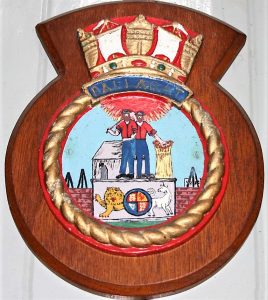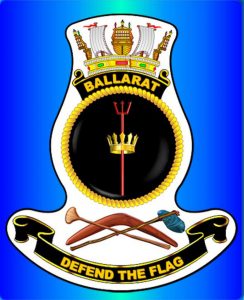March 2020
This paper is based on a 2017 Royal Australian Navy FaceBook post and correspondence with the well known Vexillographer and Society member, John Christian Vaughan. John has provided facts relating to the origins of the Eureka Flag and expressed his personal views on the current, HMAS Ballarat (2) ships motto and shoulder patch. John is considered to be Australia’s leading authority on the design, etiquette, protocol and history of flags. He has been chief executive of the Royal Australian Historical Society and was appointed by Sir Colin Hines OBE to help launch the Australian National Flag Association (ANFA) in 1983. He was founder and managing director of AUSTRALIANA FLAGS, 1973 – 2017.
Ballarat or Ballaarat
One of the most often asked question about Ballarat is “How do you spell it? Four A’s or three A’s?” It is generally accepted that the origin of the name came from two aboriginal words signifying a camping or resting place – “Balla” meaning elbow or reclining on the elbow and “Arat” meaning place.
The first white settler (1837), Scotsman Archibald Yuille, called his property “Ballarat”. Followed in 1851 by another Scot who officially surveyed the area and recorded the towns name as Ballaarat. Three years later when the first newspaper opened they named it “The Ballarat Times”. Perhaps the typesetter ran out of letter A’s.
In 1994 the three “A” version was adopted for the corporation, to align it to the area’s place-name therefore both spellings were legitimate at different times.
Navy records indicate that HMAS Ballarat has always been spelt with three “A’s”.
However, the HMAS Ballarat (1) (30 August 1941 – 27 September 1946) badges raise conjecture. Navy records suggest that HMAS Ballarat (1) may have had either one of the following or both unofficial badges.
1) A boomerang clutched in the centre by a hand cut off at the shoulder with a light blue and dark blue background. Which was a play on the aboriginal name referring to an elbow.
or
2) A badge designed on the City of Ballaarat Seal.
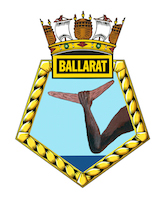
|
|
|
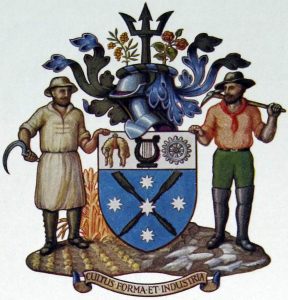
When the badge was redesigned for HMAS Ballarat (20) in 1976 (decades before it was commissioned in 26 June 2004), the decision was made to focus on the miners’ revolt at the Eureka Stockade. With this inspiration two key themes came to mind; the Stockade and the Eureka Flag. The present badge consists of a “Palisado Crown” representing a palisade (stockade), and a Trident in reference to Britannia and Neptune’s Sceptre (Navy) which was drawn from the “Ballarat Coat of Arms”. The motto reflects the other Stockade theme, “Defend the Flag”.
The Seal of the City of Ballaarat featured the arms similar to the first Ship’s Badge though the Ship’s Badge shows the modern spelling. Even in a street directory of 1865 – 1866 the spelling of Ballarat varies.
Debate Over the Ships Motto: ‘Defend The Flag’
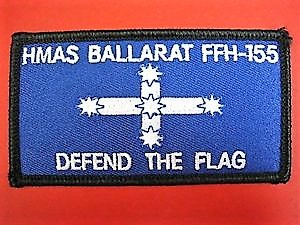
In addition to debate over the correct spelling of the Ballarat name there is debate in the community over the ship’s motto ‘Defend the Flag’.
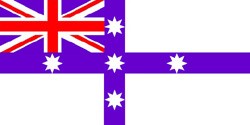
Some argue that the Ship’s Motto should refer to “Defend The (our Australian) Flag” not to the Eureka flag of 1854 which has been adopted in Australian culture as a symbol of democracy, protest and a wide variety of other causes including political purposes. John Vaughan argues, ‘the “Defend The Flag” motto and patch is confusing and misleading to an observer especially overseas. It is also divisive as the RAN defends Australia which is not represented by a regional, historical flag design (of amended design with blue key-lines around the stars) often referred to as a ‘rebel’ flag used by both extreme right and left wing groups.’
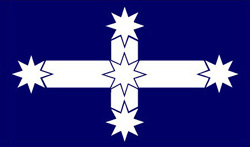
The Eureka flag of 1854 was inspired by the Australian Federation Flag (1831 to 1901). That flag was altered for the stockade use by a Canadian born participant, Henry Ross, known at the time as “Captain Ross” or “Lt. Ross”. The Flag was also of a slightly different design to the modern version used aboard HMAS Ballarat as the ‘DEFEND THE FLAG’ shoulder patch. There were no blue key-lines on the original design and the white stars were difficult to see especially at a distance being white on white.
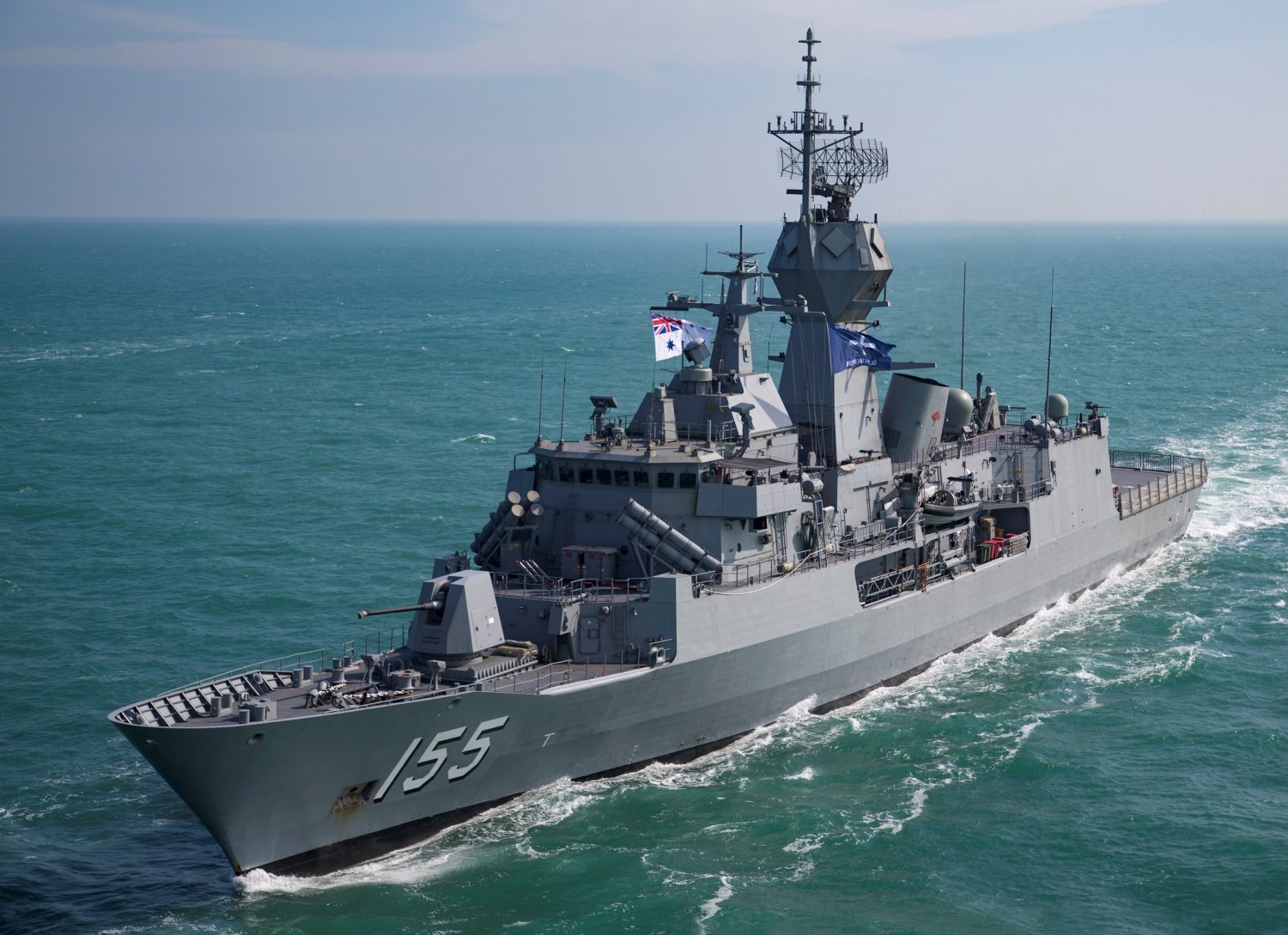
References:
Royal Australian Navy FaceBook post, 13 January 2017 accessed 1 March 2020 and available at, https://m.facebook.com/RoyalAustralianNavy/photos/pcb.1567007393313955/1567006719980689/?type=3&source=48
Australiana Flags website; http://www.australianaflags.com.au/default.php?content=contactdetails.php
Further Reading:
Ballarat & District Genealogical Society Inc, Ballarat History, available at https://www.ballaratgenealogy.org.au/ballarat-history
ANFA, The Australian Federation Flag (1831 – 1901), available at, https://www.anfa-national.org.au/australian-red-ensign/first-union-flag/federation-flag/

